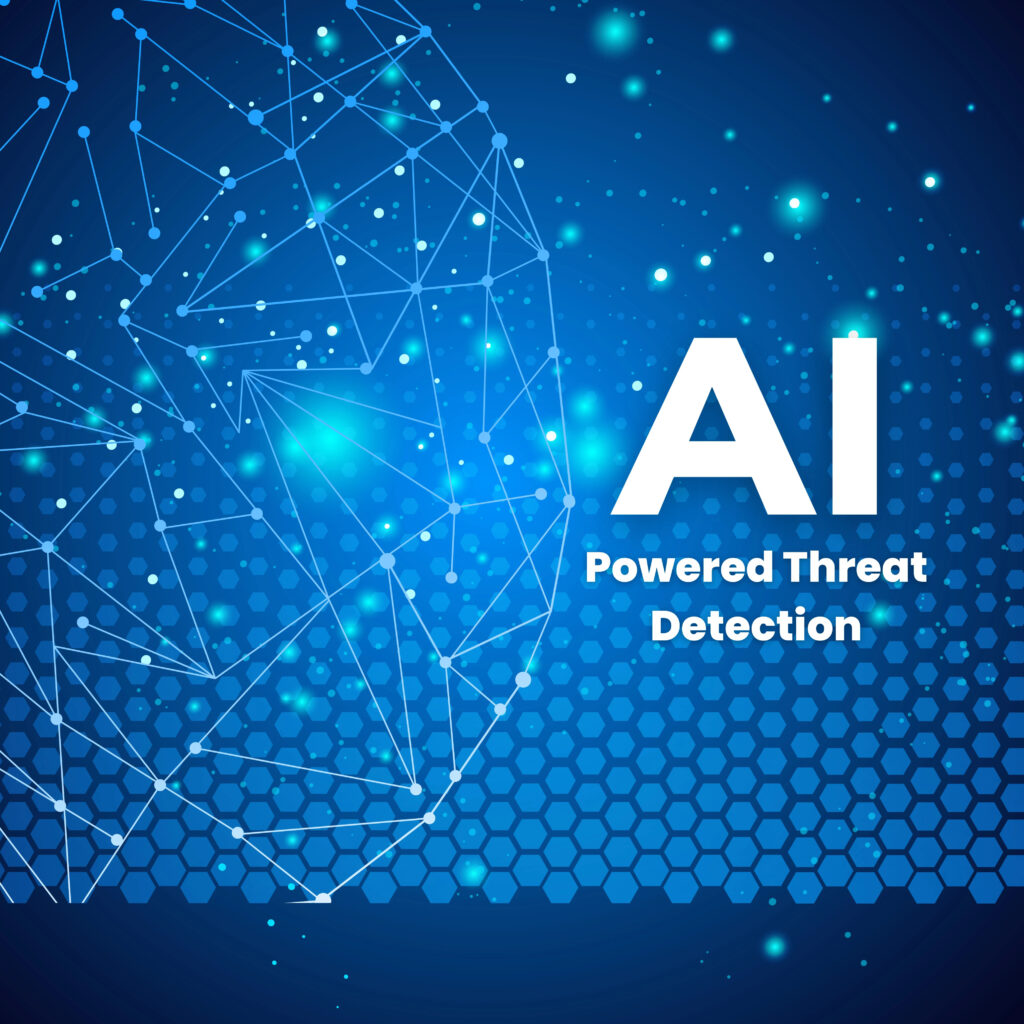AI-Powered Threat Detection and Prevention
In today’s rapidly evolving digital landscape, the persistent growth of cyber threats poses an ever-increasing risk to individuals and organizations alike. As technology advances, so do the tactics employed by malicious actors, necessitating a paradigm shift in cybersecurity strategies. Enter artificial intelligence (AI), a revolutionary force that is reshaping the way we detect and prevent cyber threats.

AI-Powered threat :The Shifting Paradigm of Cybersecurity
Traditional cybersecurity measures, while effective in their time, struggle to keep up with the sophisticated techniques employed by modern cybercriminals. The sheer volume and complexity of data involved in today’s interconnected world require a proactive and intelligent defense mechanism. This is where the incorporation of AI proves to be a game-changer, introducing a dynamic and adaptive approach to cybersecurity.
The Integration of AI-Powered threat in Cybersecurity
The integration of AI in cybersecurity is not just a trend; it’s a necessity born out of the need for a more robust defense against evolving threats. AI’s ability to process vast amounts of data and identify patterns enables a proactive approach to threat detection. Machine learning algorithms, a subset of AI, analyze data to discern normal behavior and promptly flag any deviations that may signify a potential threat.
Artificial Intelligence in Cybersecurity
AI in cybersecurity is not a luxury; it’s a strategic imperative. The speed at which AI processes and analyzes data allows for real-time threat detection, significantly reducing the response time to potential breaches. Its adaptive nature ensures continuous learning, enabling systems to evolve and refine their capabilities over time.
Key Components of AI-Powered Cybersecurity
- Machine Learning Algorithms: These algorithms excel in identifying patterns and anomalies, enabling the system to learn from historical incidents and predict potential threats.
- Natural Language Processing (NLP): NLP enhances AI’s ability to understand and respond to human language, making it effective in analyzing communication for potential threats.
- Behavioral Analytics: AI can analyze user behavior to identify unusual patterns that may indicate a compromised account or system.
- Automation and Orchestration: AI facilitates the automation of routine cybersecurity tasks, allowing human experts to focus on more complex and strategic aspects of threat mitigation.
The Impact of AI-Powered Threat Detection on Businesses
Implementing AI-powered threat detection systems is not just about enhancing cybersecurity; it’s a strategic investment in the resilience of an organization. The financial and reputational costs of a cyberattack can be devastating, making the prevention of breaches a top priority for businesses of all sizes.
AI not only detects threats more efficiently but also reduces false positives, allowing security teams to focus on legitimate risks. This not only enhances the overall security posture but also optimizes resource utilization, leading to cost savings for organizations.
AI-Powered threat :Challenges and Ethical Considerations
While AI presents a potent weapon against cyber threats, its deployment is not without challenges. Ethical considerations, biases in algorithms, and the potential for misuse are concerns that must be addressed. Striking the right balance between security and privacy is essential to ensure that AI is wielded responsibly in the fight against cybercrime.
Conclusion: A Secure Digital Future with AI-Powered threat
In the relentless pursuit of innovation, the inseparable bond between AI and cybersecurity is not just a technological marvel but a cornerstone of our collective digital future. As the threat landscape continues to morph and expand, the strategic deployment of AI becomes not only a response but a proactive stance against the ever-evolving tactics of cyber adversaries.
The integration of AI in cybersecurity is akin to an evolving shield, adapting and learning from each encounter to stay ahead of potential threats. It is not merely a trend but a fundamental shift that positions organizations at the forefront of defense in the digital battleground. The proactive nature of AI-driven systems ensures that security measures are not reactive but anticipatory, providing a crucial advantage in an environment where the next threat is always on the horizon.
Moreover, the impact of AI on businesses extends beyond mere security enhancement. By reducing false positives and optimizing resource allocation, organizations can navigate the complex cybersecurity landscape with greater efficiency. The financial and reputational costs associated with cyberattacks are not just mitigated but potentially averted, allowing businesses to focus on growth and innovation rather than recovery.
However, the marriage of AI and cybersecurity is not without its challenges and ethical considerations. As we empower AI systems to make decisions, transparency, accountability, and ethical usage become paramount. Striking the right balance between technological advancement and responsible deployment ensures that the benefits of AI are harnessed without compromising privacy, fairness, and security.
In essence, the journey toward a secure digital future with AI at its core is a continuous process of refinement and adaptation. Organizations must not only invest in cutting-edge technology but also foster a cybersecurity culture that values vigilance and collaboration. As the symbiotic relationship between AI and cybersecurity evolves, it paints a promising picture of a world where digital assets are not just protected but thrive in an environment of innovation and trust.
In conclusion, the integration of artificial intelligence in cybersecurity is not a mere augmentation; it is a transformative force that propels us into an era where the digital landscape is resilient, adaptive, and secure. As we navigate the complexities of the digital age, AI stands as a sentinel, ensuring that the promise of a connected world is not compromised by the shadows of cyber threats. It is not just a tool in the arsenal of cybersecurity; it is the vanguard of a secure and vibrant digital future.







Alma Kennedy
Hi my family member! I want to say that this post is awesome, nice written and come with approximately all significant infos. I would like to peer extra posts like this.
Janie Welch
I simply could not go away your web site prior to suggesting that I really enjoyed the standard info a person supply on your guests? Is going to be back incessantly to investigate cross-check new posts.